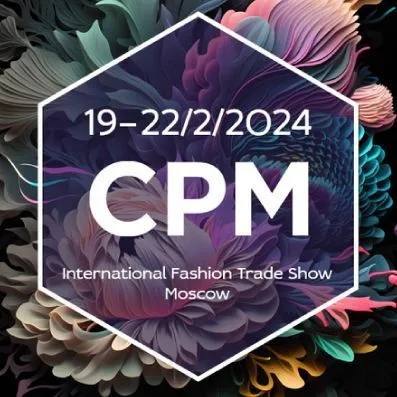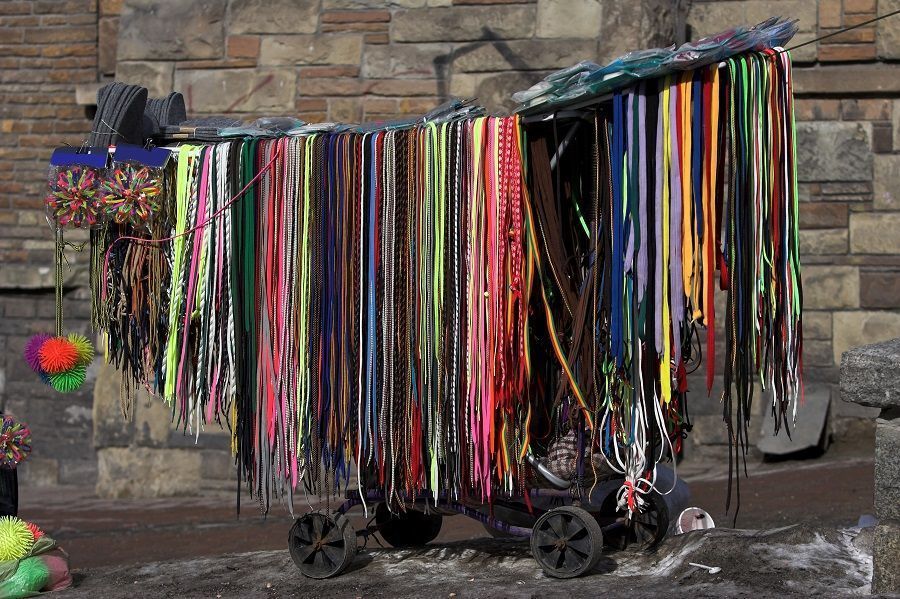
Shoelace business. On the importance of related products.

At the time of the economic downturn, even the most unexpected move may turn out to be advantageous. For example, introduce related products to your shoe store’s assortment. Although how unexpected is this move? Soputka is an old, loyal assistant to increase the average bill and increase income.
Related goods are considered that are used together with already purchased, complement its properties, help them use, are its interchangeable parts. In our shoe case, these are shoe care cosmetics, laces, insoles, socks and so on.
What to sell?
The sale of related products occurs after the sale of the main product, when the customer said: “Yes, I buy.” It is quite possible that this resale does not begin at the box office, but at the dressing bench after the client's words: “Boots fit, I take.” Experienced marketers are confident that the sale of related products should be carried out after each purchase, that is, in 100% of cases of sales of the main product. In this case, you can easily achieve an increase in the average bill. But in order to establish sales of related products, it is first necessary to determine which products can be considered related to a particular product.
Of course, when forming an assortment of related products, it is worth starting from existing ones on the main shelves. If we talk about shoes, then as a "bundle" can be a whole range of different products: laces, insoles, socks, various shoe care products.
And even ... accessories (wallets, bags, gloves, belts), because women, as you know, do not buy individual things on their own, but model the finished image in your head using this same purchase.
When forming an assortment of related products, pay attention not only to the color scheme of your shoes, but also take into account the different types of leather from which it is made, and the expected weather conditions for the near future.
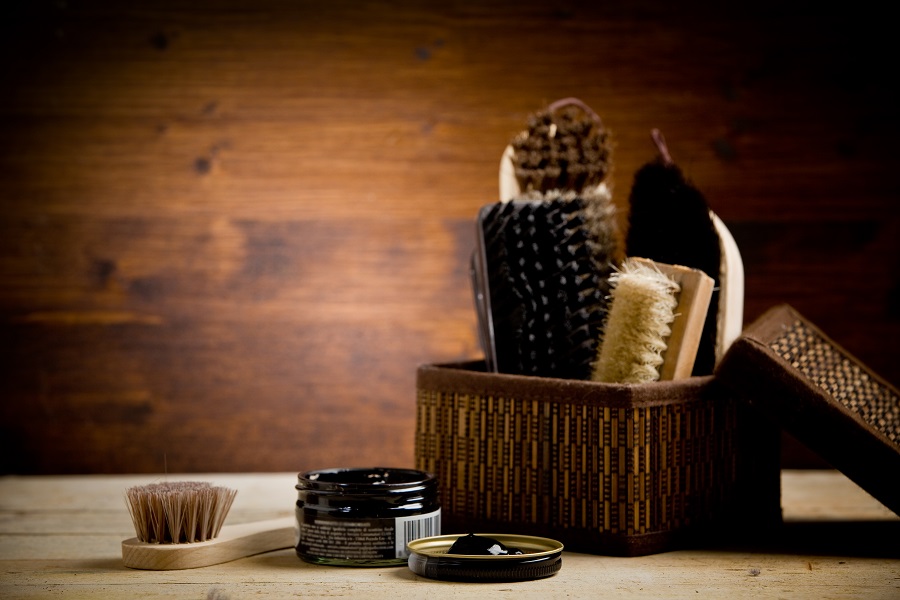 Shoe care products are included in the category of related products
Shoe care products are included in the category of related products
However, do not focus only on shoe cosmetics, as most domestic stores do, it is necessary to expand the boundaries of the offer. For example, this summer Obuv Rossii Group of Companies is developing a line of Westfalika Medical cosmetic products sold in the Westfalika and Pedestrian chain of stores, adding hand creams, face scrub and accessories to the assortment. The new cosmetic line of hand leather care products includes 5 creams with various active ingredients, such as extracts of chamomile, calendula, ginseng root, wheat germ, vitamin complex. Their strategy for developing sales of related products is paying off. So, in the 2013 year, sales of the “bundle” amounted to 865 million rubles, which is 2,7 times higher than the 2012 year. And in 2014, the company plans to increase sales by 70% to 1,5 billion rubles, and increase the share of related products in revenue to 20%.
“When choosing product categories of packages, always be creative and think about what else might be interesting to your customers,” recommends Megan Cleary, shoe expert, and author of Shoe are You? - For example, if the assortment of your store has a lot of children's shoes - supplement it with inexpensive small toys for children of the appropriate age, as well as, possibly, bags for interchangeable shoes for schoolchildren. In a sports shoe store, not only “sports” socks should be sold well, but also small accessories such as headbands, elastic bands for hair, wristbands, etc. ”
Determine the price
Choosing a price segment for a bundle is not an easy task. First, determine what the average check of your store is and, based on this amount, try to determine how much your customer is willing to spend on additional goods. For an average check of 3000 rubles, the top bar for the price of one unit of a bundle will most likely be 300 rubles. For a higher segment, respectively, this amount will increase.
The hunt for change.
This is an interesting move to sell the track, which is easily carried out by Western retailers and does not take root well in Russian realities. It's simple: when a customer buys something that costs a non-circular amount, he rarely hands out exactly as much money as the product costs - usually the seller has to count the change. Each time this is some insignificant amount, as a rule, from 1-2% to 10-15% of the purchase price. But if you take into account that a few hundred or even thousands of people go through the cash desk per day, then a substantial amount is obtained per month. And such small products as shoelaces, socks or care products are good because their low purchase price allows you to make a high mark-up in 400-500% and, accordingly, make good money on them. If the assortment of your store is small, then you can check in advance what amounts of change most often have to be returned to the customer, and pick up one or two popular products for each such amount. For example, if the shoes cost 2800 rubles, then most likely the buyer will give the cashier three pieces of paper for 1000 rubles and will wait for 200 rubles for delivery. You need to pick up some product of the same or close cost and also related shoes, for example, a care product or a transparent plastic box for storing shoes in a closet. “Remember that in this case a speech must be compiled that will help sell these funds (or boxes),” explains Melissa Potter. WHO IS SHE???. - For example, like that. Look in the eyes, smile: “Do you want funds for your shoes for change? (Hand gesture towards the rack with the funds) Your shoes will look perfect twice as long! ”You should also try the option when the seller does not just point to the funds, but takes the appropriate one and hands it to the client.
Perhaps this will help to sell more, perhaps it will hurt. Unfortunately, in this case you won’t know without testing ... ”What is the economic effect? Let's estimate. Suppose 12 pairs of shoes are sold per day, and suppose every fourth customer purchases a shoe change tool. Total, 600 rubles per day, 18 thousand per month, 216 thousand per year. Not bad for such a simple trick. In addition, if you give the seller the right to reduce the price of goods purchased for change (within the limits set by you), this will further motivate buyers: “And you do not want instead of 240 rubles of change to receive this magnificent English shoe polish that costs 350 rubles? ”Surely he wants to!
"Buy for a husband."
You can try another option for more expensive purchases - the phrase “Buy something for your husband”, which, among other things, gives the woman a moral justification for spending. So the girl will be able to tell her husband not “I bought myself Italian boots”, but “I went to buy you socks (or, for example, sandals for the summer) ... well, at the same time I bought myself boots.”
Places to Know
The axiom of merchandising states that small related products should be located in the impulsive purchase zone, that is, near the cash register, where a person is already mentally prepared for spending money. A larger bundle should be placed next to the product that it complements: a bag next to the shoes, a wallet and gloves - next to the bag. Alexander Levitas, author of the book “More money from your business”, advises: “If there is no physical opportunity to place an accompanying product next to the main one, internal navigation can help you out - a plate with an offer to buy an accompanying product and information on how to find it in the store ". However, keep in mind that it’s not enough just to put the goods or service advertising in plain sight, to place them nicely on the counter or in the window. Moreover, it is necessary to offer actively. The seller should look into the eyes of the buyer and say: “Buy this one too!” This is not difficult, but in commercial terms it sometimes literally works wonders.
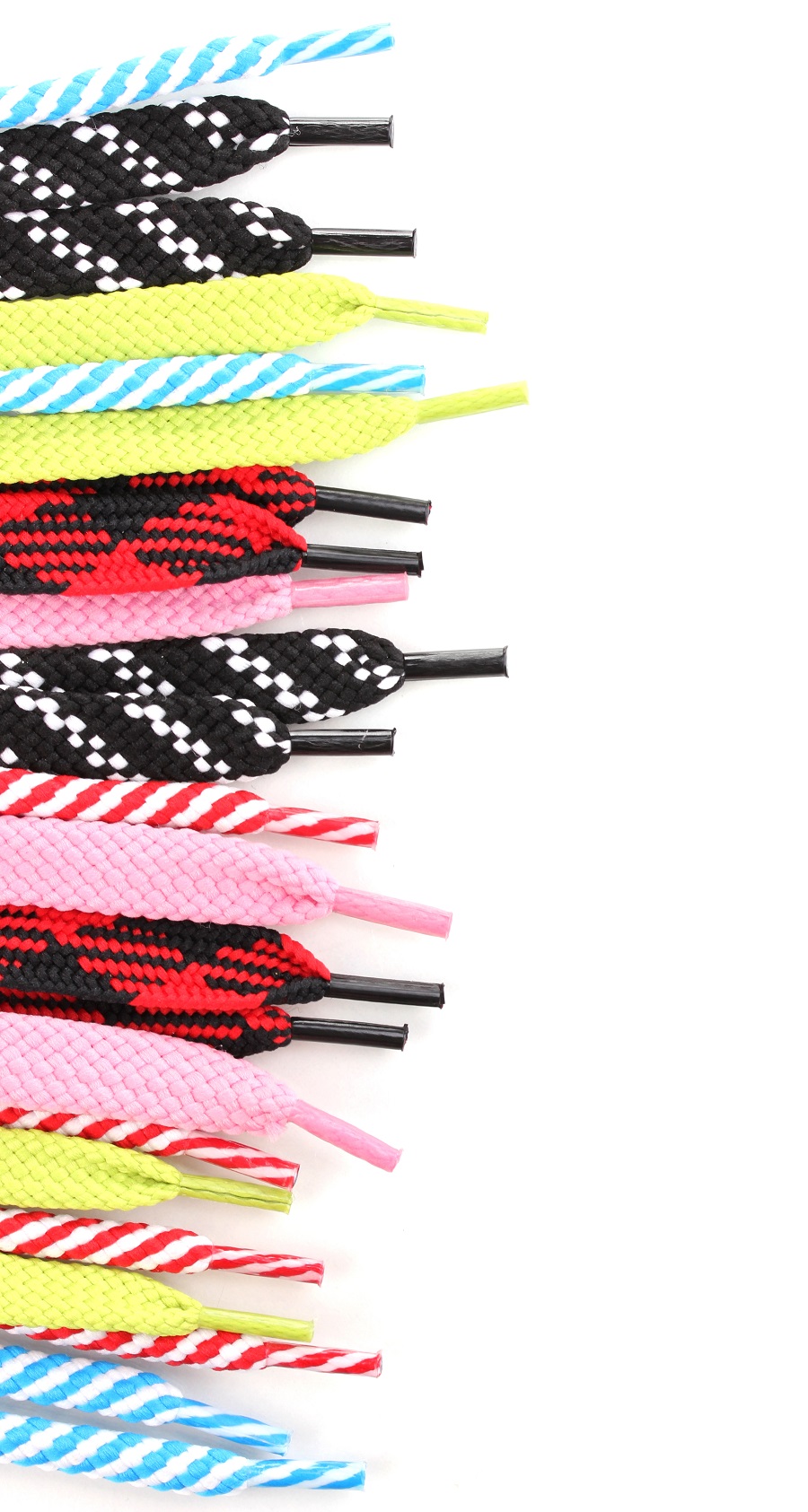 Shoelaces can also be included in the range of related products.
Shoelaces can also be included in the range of related products.
How to offer
Think about it: your business is selling a certain product or service, and what related products or services do you sell to it? Do your sellers offer them to anyone who makes a purchase? If not, why? How much money do you lose on this?
Do not steam!
Why not selling? Sellers often answer this question that they don’t do it, because buyers are offended and believe that they are being “cheated” on unnecessary goods. Remember how often, when you are in the store as a customer, you feel that you are being “thrilled” by unnecessary things. Alexander Levitas describes the difference between selling and “steaming” well: “If I buy feta cheese, tomatoes, cucumbers, lettuce and pickled olives, and the cashier asks me:“ Do you want a toilet brush at a discount? ”- in this situation you really get a feeling that they’re giving you something. But if the same cashier looked at the products in my cart, realized that this was an obvious salad set, and offered related products - for example, she would ask: “Do you want olive oil for salad at a discount?” Or “Do you want salad sauce with a discount? ”, even if I hadn’t bought anything, I would have remembered that the person at the checkout thought about me, offered exactly what I needed at that moment.”
Show interest.
In a shoe store, consultants should be able to determine why this person came to the store. For example, a girl in early July buys sandals. It would be logical to ask her if she is going to take a vacation on the sea, and, having received a positive response, offer cute beach slippers or a bright anklet bracelet. A man purchasing boots for hiking in the mountains will certainly be interested in warm, wear-resistant socks or a tourist backpack.
In this case, the consultant must clearly understand what it is worth focusing on the client. There are three product supply strategies: up-sale, cross-sale and down-sale. As a rule, the last, down-sale (the so-called "resale") is usually used for the transaction, when the client is offered a cheaper product that complements the already purchased one. But if it comes to buying an expensive pair of shoes, it is worth offering a quality, expensive cream to care for them, emphasizing that this new thing will last longer.
From big to small.
Offer a bundle should be in descending order of price: from the most expensive to the cheapest product. So the probability is high that the client will stop on an expensive offer, thus bringing you big profit. To the question: “Do you want more cream (socks, insoles)?” Most people most often answer: “No”. Therefore, it is better to replace it with a call to action: “Let us pick up your insoles!” Or “Let's take a water-repellent spray,” to which a person will most likely reflexively agree.
Assemble the kit.
There is another trick to increase the total purchase price. The seller combines several different products that are related to each other into a set and sells this set as an independent unit of goods. The trick is that not only is it more profitable for the seller to sell the kit, but it is often more profitable for the buyer to purchase it all at once, and not in parts. The main thing is that the kit should be completed successfully: there is everything that is needed, there is nothing superfluous, all components are combined with each other. At the same time, it is advisable to allow the buyer to change the configuration of the kit in reasonable aisles: replace something, add something, and remove something. This increases his motivation for shopping, but try to make sure that the changes do not reduce the total cost of the kit.
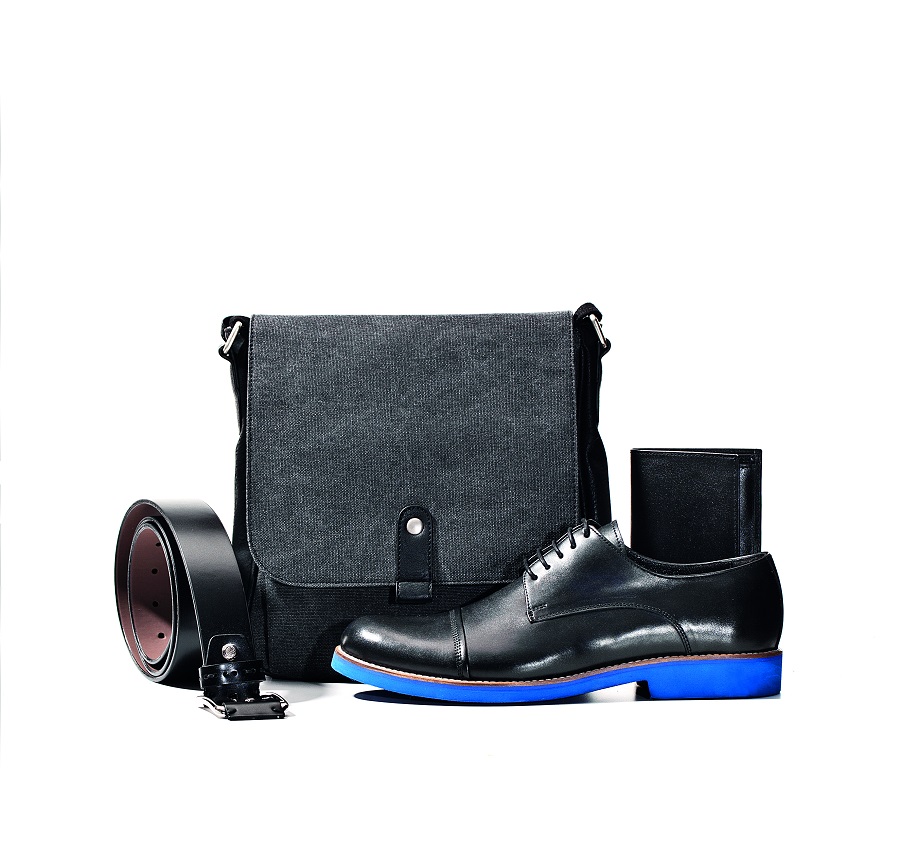 Wallets, bags, gloves, belts look organically in the assortment of shoe retail
Wallets, bags, gloves, belts look organically in the assortment of shoe retail
Give a discount.
Do not forget about the "rewards." First of all, it is a discount on a specific product or group of goods when purchased in excess of a certain amount. True, such a discount is best served as a "gift", but everyone loves gifts and does not like to quickly count in their minds. Want an illustration? You are welcome! Compare the three promotional offers: “Three pairs of shoes for the price of two”, “33% discount when buying three pairs of shoes” and “When buying two pairs of shoes - the third as a gift!” Agree that the last offer looks much more attractive, although all three are absolutely identical in meaning.
Present a service.
Well, another way to encourage purchases is a free service related to purchased goods. For example, "When buying shoes worth more than 5000 rubles - a sticker of anti-slip plates on the sole is free!". And do not forget to “loudly” inform the buyer about the promotion that awaits him in case of a big purchase. Write about it on the plate above the cash register, on the product price tags, on a large poster behind the seller’s back. Remember the needs of your buyer, and he will buy from you everything that you offer him!
FACT: On average, 25% of buyers respond to an offer to buy related products.
This article was published in the 119 issue of the print version of the magazine.
| Please rate the article |
Materials on the topic
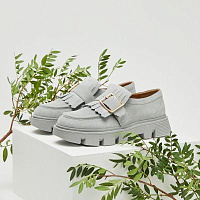
Specifics of shoe assortment management on marketplaces and growth points
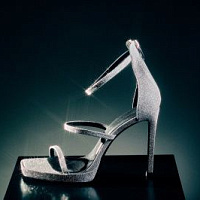
5 shoe models from Russian brands for New Year's Eve
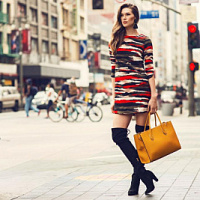
What to consider when expanding the assortment of a shoe store to include clothing
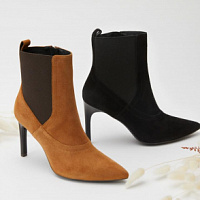
How to correctly apply category management when managing the assortment of shoes for the marketplace

Bertsy: what to look for when choosing a model
Popular
 Coach turned to Big Data analysis and won the interest of a young audience
American handbag brand Coach has planned the success of its Tabby model among a younger audience, Generation Z, by turning to big data analysis, abandoning traditional and analogue tools, such as human intuition or the ability of any executive to sense “which way the wind will blow,” writes B.O.F.
Coach turned to Big Data analysis and won the interest of a young audience
American handbag brand Coach has planned the success of its Tabby model among a younger audience, Generation Z, by turning to big data analysis, abandoning traditional and analogue tools, such as human intuition or the ability of any executive to sense “which way the wind will blow,” writes B.O.F.
 IDOL updates the concept
The IDOL brand, part of the Melon Fashion Group portfolio, opened the first flagship in an updated concept in the Aviapark shopping center in Moscow.
IDOL updates the concept
The IDOL brand, part of the Melon Fashion Group portfolio, opened the first flagship in an updated concept in the Aviapark shopping center in Moscow.
 Seven “sins” of the shoe business. How do owners harm the company with their own hands?
Why is Company X able to create a strong, profitable brand, but Company Y is struggling to make ends meet? Many people prefer to attribute success to luck, luck, or the support of strong patrons. And few people ask themselves the question: “What am I doing wrong?” Moreover, many entrepreneurs begin to harm their business from the first day of its opening. In this article, together with SR expert in the field of fashion business management and development, Maria Gerasimenko, we will look at the 7 main “sins” that business owners commit using specific examples.
Seven “sins” of the shoe business. How do owners harm the company with their own hands?
Why is Company X able to create a strong, profitable brand, but Company Y is struggling to make ends meet? Many people prefer to attribute success to luck, luck, or the support of strong patrons. And few people ask themselves the question: “What am I doing wrong?” Moreover, many entrepreneurs begin to harm their business from the first day of its opening. In this article, together with SR expert in the field of fashion business management and development, Maria Gerasimenko, we will look at the 7 main “sins” that business owners commit using specific examples.
 Louis Vuitton opens a new factory in Italy
Louis Vuitton has opened its second shoe factory in Italy. After opening the first one in Fiesso d'Artico in Veneto, the LVMH flagship brand has just opened a new production site dedicated to this category of footwear in the industrial zone of Civitano in the Marche region. There is also another brand production facility in Tuscany, where bags and leather accessories are produced, writes fr.fashionnetwork.com.
Louis Vuitton opens a new factory in Italy
Louis Vuitton has opened its second shoe factory in Italy. After opening the first one in Fiesso d'Artico in Veneto, the LVMH flagship brand has just opened a new production site dedicated to this category of footwear in the industrial zone of Civitano in the Marche region. There is also another brand production facility in Tuscany, where bags and leather accessories are produced, writes fr.fashionnetwork.com.
 The Euro Shoes@CAF exhibition will be held in Almaty
From March 11 to 13, the Euro Shoes@CAF (Central Asia Fashion) exhibition will be held in Almaty at the Atakent exhibition complex. The exhibition, which is the largest international event in the fashion industry in Central Asia, will present collections of clothing, shoes and accessories.
The Euro Shoes@CAF exhibition will be held in Almaty
From March 11 to 13, the Euro Shoes@CAF (Central Asia Fashion) exhibition will be held in Almaty at the Atakent exhibition complex. The exhibition, which is the largest international event in the fashion industry in Central Asia, will present collections of clothing, shoes and accessories.
 Euro Shoes will start operating on February 19 in Moscow!
The winter session of the international exhibition of footwear and accessories Euro Shoes premiere collection will be held in Moscow at the Expocenter from February 19 to 22. The organizers promise the presence of all the main participants at the exhibition, as well as new names from Europe, Asia and Russia.
Euro Shoes will start operating on February 19 in Moscow!
The winter session of the international exhibition of footwear and accessories Euro Shoes premiere collection will be held in Moscow at the Expocenter from February 19 to 22. The organizers promise the presence of all the main participants at the exhibition, as well as new names from Europe, Asia and Russia.
 American buyers couldn't buy Birkin bags and sued Hermès
French fashion house Hermès is facing a lawsuit in California from two customers who were unable to purchase exclusive Birkin bags. The fashion house is accused of unfair commercial practices.
American buyers couldn't buy Birkin bags and sued Hermès
French fashion house Hermès is facing a lawsuit in California from two customers who were unable to purchase exclusive Birkin bags. The fashion house is accused of unfair commercial practices.
 Why Rendez-Vous and Yandex Lavka released a “bread bag”
Shoe retailer Rendez-Vous announced the launch of a spring collaboration with Yandex Lavka and released a roll that resembles the shape of a woman’s handbag. This “Bread Bag” is presented in the Yandex.Lavka application at a price of 249 rubles. On the product packaging there is a promotional code for 1000 rubles, which can be spent in the Rendez-Vous network.
Why Rendez-Vous and Yandex Lavka released a “bread bag”
Shoe retailer Rendez-Vous announced the launch of a spring collaboration with Yandex Lavka and released a roll that resembles the shape of a woman’s handbag. This “Bread Bag” is presented in the Yandex.Lavka application at a price of 249 rubles. On the product packaging there is a promotional code for 1000 rubles, which can be spent in the Rendez-Vous network.
 Camper has released innovative sneakers - designers
Spanish brand Camper's new Roku sneaker features six interchangeable components to create up to 64 different looks and color combinations. Roku means "six" in Japanese.
Camper has released innovative sneakers - designers
Spanish brand Camper's new Roku sneaker features six interchangeable components to create up to 64 different looks and color combinations. Roku means "six" in Japanese.
 Christian Louboutin presented a collection in a cowboy style
At the Loubi Show in Paris, the French luxury brand Christian Louboutin presented its fall 2024 collection, following the trend - in the style of the Wild West. It included cowboy boots and rhinestone loafers.
Christian Louboutin presented a collection in a cowboy style
At the Loubi Show in Paris, the French luxury brand Christian Louboutin presented its fall 2024 collection, following the trend - in the style of the Wild West. It included cowboy boots and rhinestone loafers.
 Fashion Week takes place in Moscow
Fashion Week takes place in the Russian capital. Events include fashion shows, markets where you can purchase clothes, bags and accessories, and a B2B Showroom for fashion industry professionals.
Fashion Week takes place in Moscow
Fashion Week takes place in the Russian capital. Events include fashion shows, markets where you can purchase clothes, bags and accessories, and a B2B Showroom for fashion industry professionals.
 Turkish brand Vaneda on Euro Shoes
Street style, sport, outdoor, military – the main style directions of footwear of the company from Turkey
Turkish brand Vaneda on Euro Shoes
Street style, sport, outdoor, military – the main style directions of footwear of the company from Turkey
 Kari accuses Zenden of unfair competition and is suing the FAS
The largest Russian shoe chain, Kari, appealed to the Moscow Arbitration Court to declare the actions of the Federal Antimonopoly Service (FAS) illegal, writes RBC.
Kari accuses Zenden of unfair competition and is suing the FAS
The largest Russian shoe chain, Kari, appealed to the Moscow Arbitration Court to declare the actions of the Federal Antimonopoly Service (FAS) illegal, writes RBC.
 Fashion trends Fall-Winter 2023/24 for commercial footwear purchases
Permanent contributor to Shoes Report. Elena Vinogradova, an expert in sales and purchases in the fashion business, prepared an overview of the trends for the autumn-winter 2023/24 season especially for us.
Fashion trends Fall-Winter 2023/24 for commercial footwear purchases
Permanent contributor to Shoes Report. Elena Vinogradova, an expert in sales and purchases in the fashion business, prepared an overview of the trends for the autumn-winter 2023/24 season especially for us.
 MSCHF and Crocs launch "Big Yellow Boots"
Creator of the Big Red Boots, Brooklyn brand MSCHF has teamed up with American plastic clog and sandal brand Crocs for another oversized shoe. The new Big Yellow Boots will go on sale on August 9th.
MSCHF and Crocs launch "Big Yellow Boots"
Creator of the Big Red Boots, Brooklyn brand MSCHF has teamed up with American plastic clog and sandal brand Crocs for another oversized shoe. The new Big Yellow Boots will go on sale on August 9th.
 Five rules of professional lighting for a shoe store - something that is relevant in any season
When developing a lighting concept for shoe retailers, it is important to take into account not only the history of the brand, the architectural content of the premises, the target audience of the stores, but also the seasonality of the goods. With the onset of the cold season, client preferences change: bright weightless shoes are replaced by more massive models in discreet dark colors. Despite significant differences in summer and winter collections, the overall philosophy of the brand, its recognition should remain unchanged at any time of the year. Tatyana Ryzhova, an SR lighting expert in fashion retail, has identified five basic rules for a competent lighting concept for a shoe store for readers of the magazine, which will help to present winter assortment to customers in a winning way.
Five rules of professional lighting for a shoe store - something that is relevant in any season
When developing a lighting concept for shoe retailers, it is important to take into account not only the history of the brand, the architectural content of the premises, the target audience of the stores, but also the seasonality of the goods. With the onset of the cold season, client preferences change: bright weightless shoes are replaced by more massive models in discreet dark colors. Despite significant differences in summer and winter collections, the overall philosophy of the brand, its recognition should remain unchanged at any time of the year. Tatyana Ryzhova, an SR lighting expert in fashion retail, has identified five basic rules for a competent lighting concept for a shoe store for readers of the magazine, which will help to present winter assortment to customers in a winning way.
 Bertsy: what to look for when choosing a model
Bertsy and tactical boots are becoming more and more relevant footwear, and not only because of the start of the hunting season. In Russia, there are several dozen enterprises producing this type of footwear. Oleg Tereshin, Deputy Chief Technologist of ZENDEN, told Shoes Report about the differences and features of ankle boots and what you should pay attention to when buying them in specialized retail and online.
Bertsy: what to look for when choosing a model
Bertsy and tactical boots are becoming more and more relevant footwear, and not only because of the start of the hunting season. In Russia, there are several dozen enterprises producing this type of footwear. Oleg Tereshin, Deputy Chief Technologist of ZENDEN, told Shoes Report about the differences and features of ankle boots and what you should pay attention to when buying them in specialized retail and online.
 I doubt and object: how to find an approach to difficult clients?
How good and serene would be the work of a salesperson if the customers were calm, cheerful, always knew exactly what they wanted, and bought, bought, bought! It is a pity that this is possible only in dreams. Therefore, we will not dream, but we will act. Together with Maria Gerasimenko, a permanent author of SR, we understand the doubts and objections of buyers and build a strategy for working with them. Our expert pays special attention to the two main objections of buyers, on which 82% of sales are lost.
I doubt and object: how to find an approach to difficult clients?
How good and serene would be the work of a salesperson if the customers were calm, cheerful, always knew exactly what they wanted, and bought, bought, bought! It is a pity that this is possible only in dreams. Therefore, we will not dream, but we will act. Together with Maria Gerasimenko, a permanent author of SR, we understand the doubts and objections of buyers and build a strategy for working with them. Our expert pays special attention to the two main objections of buyers, on which 82% of sales are lost.
 EURO SHOES presents an updated section of the GLOBAL SHOES exhibition with collections of shoe and bag brands from Asian countries
EURO SHOES premiere collection is expanding. Along with the traditional pool of leading European footwear brands from Germany, Spain, Italy and Turkey, several dozen footwear and bag brands from the Middle Kingdom will be presented in the GLOBAL SHOES section at the Moscow Expocentre from August 29 to September 1.
EURO SHOES presents an updated section of the GLOBAL SHOES exhibition with collections of shoe and bag brands from Asian countries
EURO SHOES premiere collection is expanding. Along with the traditional pool of leading European footwear brands from Germany, Spain, Italy and Turkey, several dozen footwear and bag brands from the Middle Kingdom will be presented in the GLOBAL SHOES section at the Moscow Expocentre from August 29 to September 1.
 World Footwear Yearbook: Global footwear production reaches 23,9 billion pairs and is back to pre-pandemic levels
The Portuguese association of shoe manufacturers APICCAPS published the 13th edition of the international statistical bulletin World Footwear Yearbook for 2023, according to which in 2022 the production and export of shoes worldwide increased by 7,6% and 9%, respectively, and the world production of shoes reached 23,9 billion couples and returned to pre-pandemic levels.
World Footwear Yearbook: Global footwear production reaches 23,9 billion pairs and is back to pre-pandemic levels
The Portuguese association of shoe manufacturers APICCAPS published the 13th edition of the international statistical bulletin World Footwear Yearbook for 2023, according to which in 2022 the production and export of shoes worldwide increased by 7,6% and 9%, respectively, and the world production of shoes reached 23,9 billion couples and returned to pre-pandemic levels.
 Rostov footwear brand Novak presented a collection of sneakers and sneakers
In the spring-summer 2023 season, the Rostov-on-Don shoe brand Novak presented a cute collection of sneakers and sneakers for every day. The upper of the shoe is made of genuine leather, suede, nubuck, the sole is made of light EVA.
Rostov footwear brand Novak presented a collection of sneakers and sneakers
In the spring-summer 2023 season, the Rostov-on-Don shoe brand Novak presented a cute collection of sneakers and sneakers for every day. The upper of the shoe is made of genuine leather, suede, nubuck, the sole is made of light EVA.
 Jacquemus x Nike collaboration released
The second collaboration between Jacquemus and Nike, which has been talked about so much, is finally out. The appearance of the couple for many was a surprise. The model of Nike Air Force 1 sneakers, which was taken as the basis of the new collection, has undergone significant changes.
Jacquemus x Nike collaboration released
The second collaboration between Jacquemus and Nike, which has been talked about so much, is finally out. The appearance of the couple for many was a surprise. The model of Nike Air Force 1 sneakers, which was taken as the basis of the new collection, has undergone significant changes.
 Crocs releases a collaboration with Barbie
If Barbie ditched heels and wore crocs, they would be pink. It was this collection in pink that was released by the American brand of plastic clogs Crocs, for the release of the film "Barbie" in the United States.
Crocs releases a collaboration with Barbie
If Barbie ditched heels and wore crocs, they would be pink. It was this collection in pink that was released by the American brand of plastic clogs Crocs, for the release of the film "Barbie" in the United States.
 Shoe educational program: what shoe soles are made of
“What is the difference between TEP and EVA? What does tunit promise me? Is PVC glue? What is the sole of these shoes made of? ”- the modern buyer wants to know everything. In order not to smash his face in front of him and be able to explain whether such a sole suits him in soles, carefully read this article. In it, process engineer Igor Okorokov tells what materials the soles of shoes are made of and what makes each of them so good.
Shoe educational program: what shoe soles are made of
“What is the difference between TEP and EVA? What does tunit promise me? Is PVC glue? What is the sole of these shoes made of? ”- the modern buyer wants to know everything. In order not to smash his face in front of him and be able to explain whether such a sole suits him in soles, carefully read this article. In it, process engineer Igor Okorokov tells what materials the soles of shoes are made of and what makes each of them so good.
 How to set prices that will earn
Some businessmen still confuse the concept of margin with the concept of trade margins and set prices for their goods, guided solely by the example of competitors. No wonder they go broke! Analyst at the Academy of Retail Technologies Maxim Gorshkov gives several tips and formulas with which you can set not only ruinous, but also profitable prices.
How to set prices that will earn
Some businessmen still confuse the concept of margin with the concept of trade margins and set prices for their goods, guided solely by the example of competitors. No wonder they go broke! Analyst at the Academy of Retail Technologies Maxim Gorshkov gives several tips and formulas with which you can set not only ruinous, but also profitable prices.
 Sales of shoes and accessories: effective techniques for business rhetoric
Which speech modules are effective in communicating with potential and current customers of shoe stores, and which are not, Anna Bocharova, a business consultant, knows.
Sales of shoes and accessories: effective techniques for business rhetoric
Which speech modules are effective in communicating with potential and current customers of shoe stores, and which are not, Anna Bocharova, a business consultant, knows.
 We form the salary of sellers: expert advice
“How do you charge your consultants for personal or general sales?” Is one of the most popular questions causing a lot of controversy and gossip on the online forums of retail business owners. Indeed, how to properly form the earnings of sellers? But what about bonuses, where to get a sales plan from, do employees allow them to buy goods at discounted stores? In search of truth, the Shoes Report turned to a dozen shoe retailers, but no company wanted to disclose its motivation system - the process of its development was too complicated and individual. Then we asked four business consultants, and finally became convinced that the topic of seller motivation is very complex, because even our experts could not come to a common opinion.
We form the salary of sellers: expert advice
“How do you charge your consultants for personal or general sales?” Is one of the most popular questions causing a lot of controversy and gossip on the online forums of retail business owners. Indeed, how to properly form the earnings of sellers? But what about bonuses, where to get a sales plan from, do employees allow them to buy goods at discounted stores? In search of truth, the Shoes Report turned to a dozen shoe retailers, but no company wanted to disclose its motivation system - the process of its development was too complicated and individual. Then we asked four business consultants, and finally became convinced that the topic of seller motivation is very complex, because even our experts could not come to a common opinion.
 Technology Selling Issues
There is nothing worse than meeting the buyer with the words “Hello, can I help you with something?”, Because the seller works in the store just to help. Criticizing this well-established pattern of communication with the buyer, Andrei Chirkarev, business coach for effective sales and the founder of the New Economy project, shares the technology of truly selling issues with readers of Shoes Report.
Technology Selling Issues
There is nothing worse than meeting the buyer with the words “Hello, can I help you with something?”, Because the seller works in the store just to help. Criticizing this well-established pattern of communication with the buyer, Andrei Chirkarev, business coach for effective sales and the founder of the New Economy project, shares the technology of truly selling issues with readers of Shoes Report.
 The whole truth about Bayer. Who is he and how to become one?
Bayer is no longer a new, but still a popular and sought-after profession. It’s fashionable to be a buyer. Buyers are at the origins of the emergence and development of trends. If the designer offers his vision of fashion in the season, then the buyer selects the most interesting commercial ideas. It is on buyers that the policy of sales of stores and what, in the end, the buyer will wear depends on. This profession is surrounded by a magical fleur, often associated with a lack of understanding of what exactly is the work of a buyer.
The whole truth about Bayer. Who is he and how to become one?
Bayer is no longer a new, but still a popular and sought-after profession. It’s fashionable to be a buyer. Buyers are at the origins of the emergence and development of trends. If the designer offers his vision of fashion in the season, then the buyer selects the most interesting commercial ideas. It is on buyers that the policy of sales of stores and what, in the end, the buyer will wear depends on. This profession is surrounded by a magical fleur, often associated with a lack of understanding of what exactly is the work of a buyer.
 Fur, and not only: types of lining
In the production of winter footwear, various materials are used that are designed to retain heat and meet the requirements of consumers: natural sheepleather, artificial fur, artificial fur from natural wool and others. All types of lining fur have their own advantages and disadvantages. Let's consider the properties of each of them.
Fur, and not only: types of lining
In the production of winter footwear, various materials are used that are designed to retain heat and meet the requirements of consumers: natural sheepleather, artificial fur, artificial fur from natural wool and others. All types of lining fur have their own advantages and disadvantages. Let's consider the properties of each of them.
 Retail Arithmetic
Before you begin to solve specific problems, you need to find out how accurately all the leaders of your company understand the basic terminology of retail.
Retail Arithmetic
Before you begin to solve specific problems, you need to find out how accurately all the leaders of your company understand the basic terminology of retail.
 How to fire a worker without tears, scandal and trial
Sooner or later, any manager is faced with the need to part with an employee. Properly and on time the dismissal procedure will save the company money, and the boss himself - nerves and time. But why sometimes, knowing that a break in relations is inevitable, we put off the decision for months?
How to fire a worker without tears, scandal and trial
Sooner or later, any manager is faced with the need to part with an employee. Properly and on time the dismissal procedure will save the company money, and the boss himself - nerves and time. But why sometimes, knowing that a break in relations is inevitable, we put off the decision for months?




